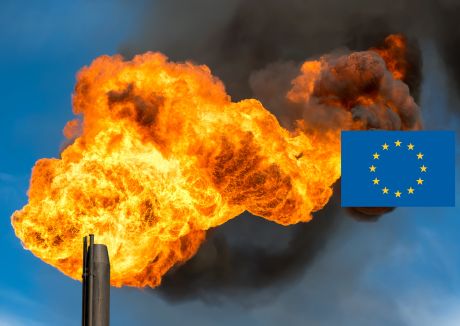In less than a decade, the US has risen to be the largest LNG exporter in the world – and its dominance is only set to continue. But what could the implications of this be for global gas markets? And are there geopolitical risks to be found in dependence on one exporter for the lion’s share of future new supply?
Mind the gap
Global LNG demand has grown significantly over the last decade – from 237 Mt in 2013, to an estimated 416 Mt in 2023. We expect this trend to double down, with substantial growth to 2040.
Coal-to-gas switching in developing markets, strong GDP growth in Asia, and continued loss of pipeline gas supplies into Europe could drive LNG imports to near 850 Mtpa by the time of peak LNG in the 2040s.
At the same time, there is insufficient liquefaction capacity in the world to meet this.
Just north of 470 Mtpa of nameplate liquefaction capacity is operational, and gradually over time the productive capacity of ageing plants will decline. Even with the c. 200 Mtpa that has taken FID and is under construction, around 300 Mtpa will still need to be sanctioned to meet peak demand.
Where will much of this LNG come from?
The future is American
Since the shipment of its first LNG cargo in 2016, the US – enabled by the development of its shale gas resources – has grown to become the largest exporter of LNG in 2023, with estimated exports of almost 90 Mt, taking poll position from Qatar.
Conventional wisdom suggests that the US will continue its rise and be the driver behind LNG supply growth going forward. It is not hard to see why:
- Of the 200 Mtpa of projects under construction, the US accounts for nearly 40% – the biggest contribution of any country
- Around 175 Mtpa worth of projects are in various stages of pre-FID development – the highest amount of any country (though it is unlikely all would be sanctioned)
- The US’ huge and low-cost shale resource base and highly liquid gas market can underpin significant expansions in LNG production
- The US is a low-cost location for constructing liquefaction plants
- US projects have the strongest prospects for gaining finance – with access to bond markets, a strong financial system, and one that is not refraining from investments in fossil fuels
But could increasing dominance of US LNG production have side effects on global gas markets?
The Panama Canal
LNG exports from the US Gulf of Mexico to Asia have the choice to either transit the Panama Canal, the Suez Canal, or the Cape of Good Hope. The Panama Canal is the favoured route, as it is the shortest and therefore the cheapest.
However, in November 2023 the Panama Canal Authority announced that it will reduce the number of shipments allowed to transit the canal daily – from 35 in 2022 to 18 from February 2024 – due to droughts and shrinking water levels.
While LNG represents only a small minority of canal crossings, these restrictions will likely mean that fewer US LNG cargoes will be able to pass through. As has occurred previously when restrictions have been implemented, there will be an increase in the proportion of cargoes transiting the alternative routes.
It could be argued that these restrictions will be eased, but shrinking water levels may be a long-term problem. And besides, the increasing volumes of US LNG will mean more and more cargoes trying to transit the canal in future.
This is an unfortunate confluence – restrictions on the number of cargoes that can transit the Panama Canal, and an increase in the number of cargoes wanting to transit it. This feasibly could create a scenario where more and more of the US LNG exported to Asia will have to transit via longer and costlier routes going forward.
The consequence of US LNG dominance: higher costs for LNG deliveries to Asian markets, by way of increased transit times and upward pressure on shipping rates, placing upward pressure on prices for gas that (in emerging markets such as Pakistan and Vietnam) is already struggling to compete with other energy sources.
The domestic gas market and Henry Hub
Since the earliest LNG developments in the US, most of its export volumes have had prices linked to Henry Hub (HH). This is because US LNG production is effectively priced on the cost of gas, with HH reflecting that gas cost.
By tying the LNG export price to the US’ primary natural gas hub, this links developments in the domestic US gas market more closely to international markets. What this means is that as US LNG exports increase, significant upward pressure is exerted on HH prices – the US Energy Information Administration (EIA) estimates a USD 1.50/MMBtu spread in long-term HH prices between scenarios of high and low LNG exports. (The converse to this relationship is that international LNG prices will become more linked to events in the US. A risk here is that HH has shown significant volatility in the face of extreme weather events).
The impact of LNG on HH is very much an example of the snake eating its own tail. The US taking a bigger and bigger share of growing global LNG demand will provide upside to HH prices, in turn encouraging more and more gas developments. This adds to the supply available to support the development of new LNG export projects.
This comes despite the backdrop of an (eventual) decline in domestic US gas consumption – as the Inflation Reduction Act encourages a pivot towards renewable power generation, for instance – something that would otherwise be exerting downward pressure on HH prices. And this, by itself, will be a potential source of domestic political tension, with possible ramifications for the country’s LNG industry.
The consequence of US LNG dominance: a feedback loop, where increasing LNG exports support domestic prices, in turn ensuring the supply needed to continue increasing LNG exports, and extending the life of US gas assets beyond what domestic demand may otherwise entail.
Dependency and geopolitics
Talk to anyone in Europe. They know what happens when you become too dependent on one country for your gas supply. As the US’ dominance in global LNG supply intensifies, it is worth considering the risk factors. Domestic developments in the US could have significant implications for global LNG trade, for example:
- Geopolitical uncertainty: In 2018, as part of the US-China trade war, the Chinese government applied a 10% retaliatory tariff on the import of US LNG. In the event of future trade wars between the two countries, LNG could again face trade frictions. But trade wars are not the only source of potential conflict. In the context of possible conflict over Taiwan, US-China trade would be totally upended. If Chinese demand for US LNG sharply fell, there would be a significant glut of US LNG available (or mass shut-ins of production facilities); at the same time, there would be fierce competition from Chinese buyers for alternative sources of supply.
LNG trade has thus far been the beneficiary of a benign geopolitical environment. Global political harmony has been showing signs of erosion, so a world where a single country becomes the dominant source of new supply is a world where global tensions become significantly more serious for the LNG market.
- Domestic opposition to LNG: Despite President Biden’s unabashedly green climate agenda, his government continues to allow the greenlighting of new LNG export facilities. But not all in his party feel the same way. In 2023, over 60 congressional Democrats called for a moratorium on new plants. While elections in 2024 may change the balance of power in Washington, as climate ambitions progress, and the industry faces backlash if higher exports generate higher gas prices for domestic consumers, it may only be a matter of time before this chorus swells. This even calls into question the supply that is currently considered to be “baked in”. Could legislative restrictions hamper the ability of existing and under-construction projects deliver on their contracted commitments?
A significant slowdown in the deployment of new US LNG production capacity – or restrictions on existing producers meeting contractual requirements – would have significant supply implications, affecting both long-term prices and the ability of new markets to continue growing.
So, what does this all mean?
The LNG industry is one with a storied history of paradigm shifts. The emergence of the US as an exporter in the first place is one. And the US becoming the world’s biggest exporter – a position that will apparently only strengthen – is the next.
While this could be the key factor in ensuring supply is able to keep apace with demand, the possible implications of reliance on a dominant supplier – and the geopolitical risks that lie within – means expectations for the LNG industry should not be taken for granted.
Get in touch today to find out more about how Gas Strategies can support your organisation with any of the points in this blog or regarding any aspect of the energy transition. Contact us.








